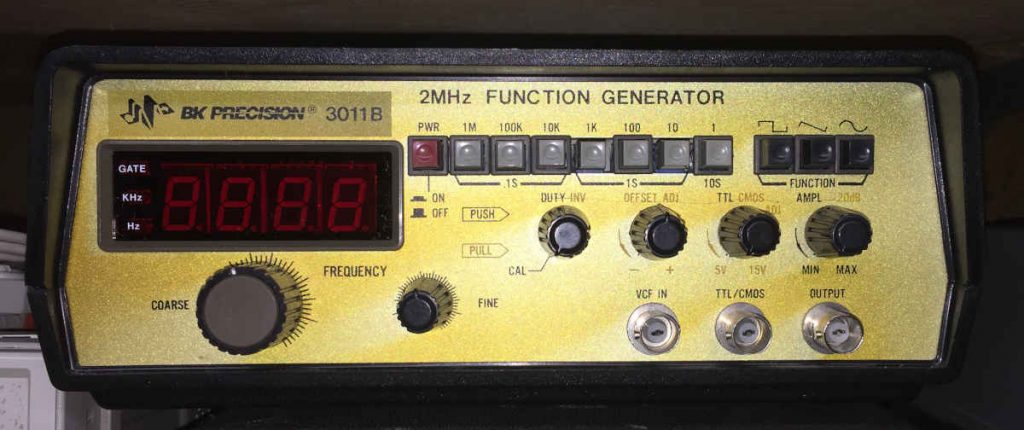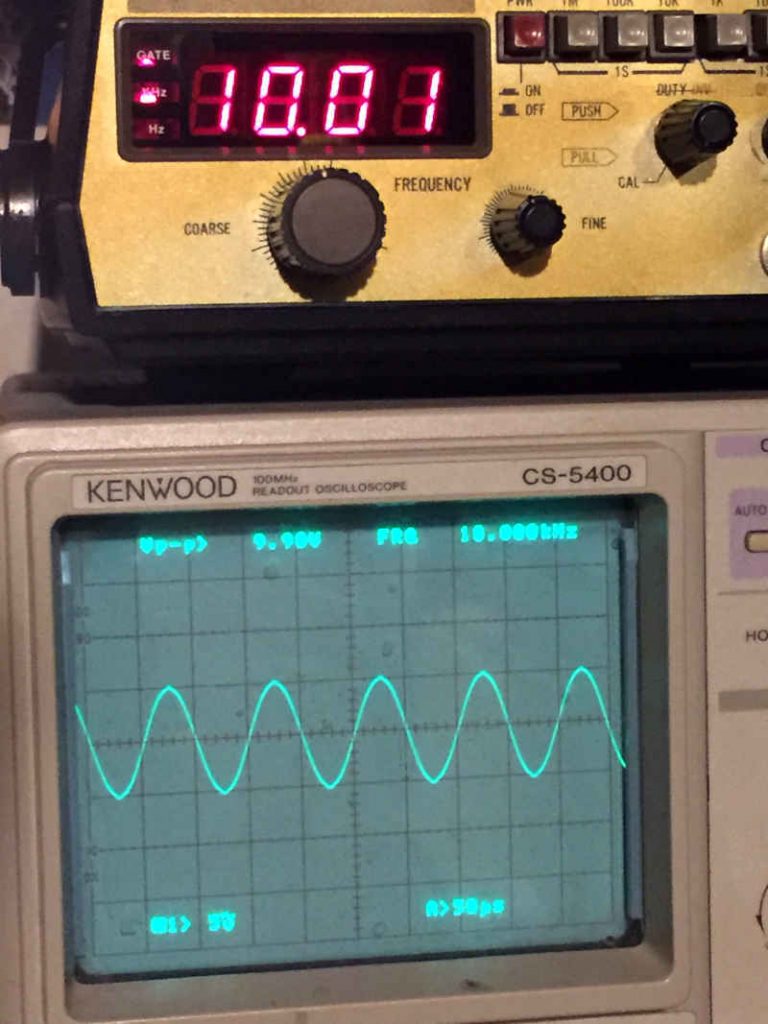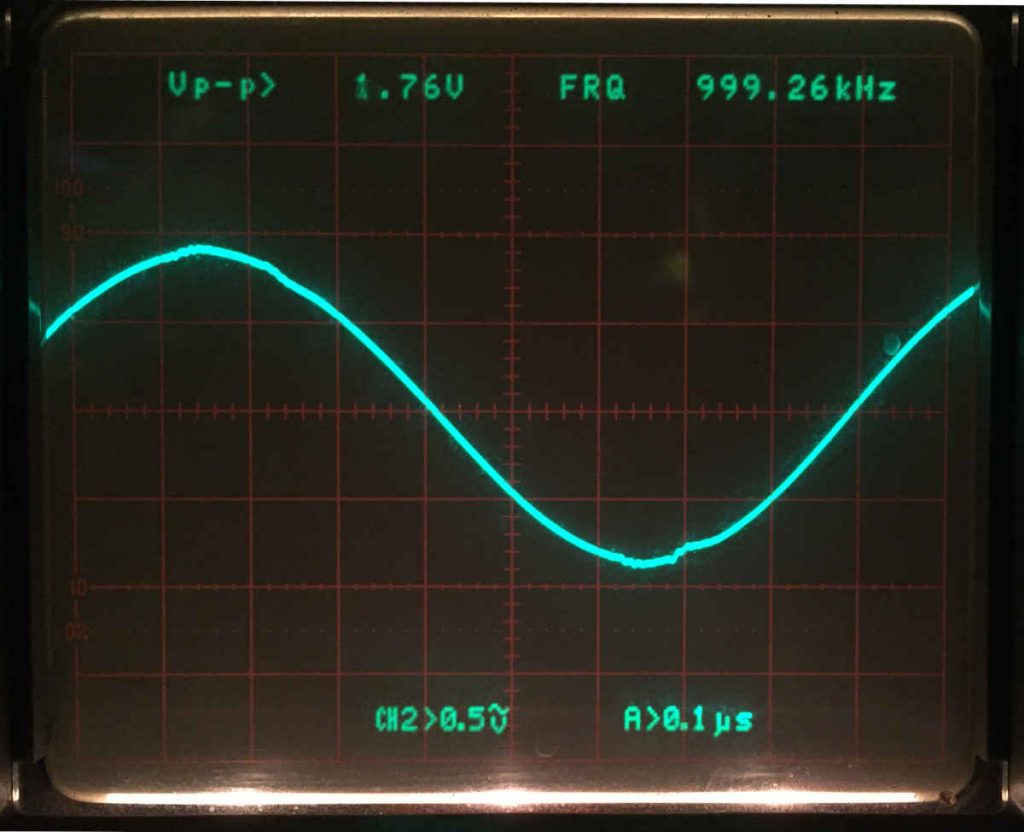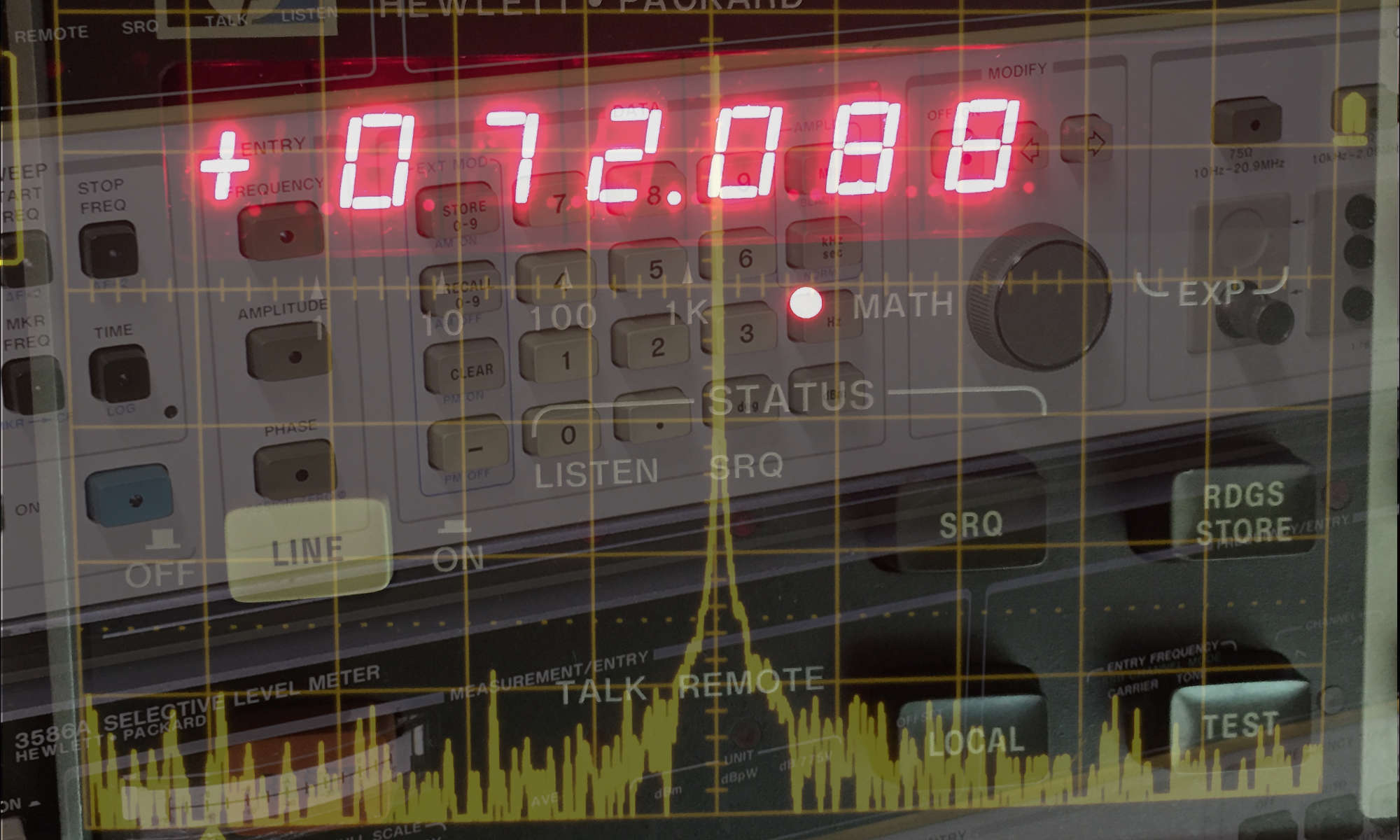My new function generator has arrived. It’s a BK Precision 3011B that I found on EBay for $20. This instrument dates to the early 1990s. 1 The previous owner was a Ham Radio Operator and he kept it in nice looking condition. The front panel is a bit worn, the background bleached and faded. But it works.

A Basic Function Generator
The 3011B is a basic function generator and it only generates waveforms as high as 2 MHz. Good for low frequency and audio projects.
There is not that much to this generator. It produces sine, square, and triangle waveforms, and it generates TTL and CMOS pulse waveforms which are useful for digital projects. The frequency readout has a large red four digit LED display.
It Works!
Here is the 3011B delivering a 10 KHz sine wave to my Kenwood Oscilloscope.

As you can see above, the LED display is nice and bright. But the LED background is a bit too reflective, and the unlit elements of the LED are much too visible. This makes the display hard to read unless it is dark with the lights off in the lab.
The LED display has two decimal digit resolution. And, the frequency counter reads a little bit high, so it needs calibration. I’m not sure if it even can be calibrated.
The output voltage goes as high as 10V with a 50 ohm load. However, the minimum output voltage does not go all the way to zero volts. The lowest that it will go is about 1.5V. I don’t know if this is by design or by defect, and the specifications do not state a minimum output voltage value. This will be a problem if I want to do low voltage measurements. I plan to do measurements that require signal amplitudes of 0.22 volts (or 0.0 dBm at 50 ohms, which I will explain in future posts) and much much lower. Clearly, this is not the instrument to use for those measurements.
Is that Distortion I see?
Reducing the output from the generator and increasing the timebase resolution on the oscilloscope reveals greater detail on the waveform. The 3011B emits a very unclean signal. As you can see below, there is a slight defect in the waveform to the right of the maximum peak and a very jagged defect just after the minimum peak is reached. I begin to see this distortion at frequencies greater than 5 KHz and it just gets more pronounced at higher frequencies up to the 2MHz maximum. There is definitely some problem in the circuit causing this distortion.

A clean and pure sine wave looks like this.
Similar Distortions
A brief search engine query revealed another BK 3011B owner who has a very similar sine wave distortion on his unit. Here is his YouTube Video. 2 Although the distortions he is seeing are not exactly the same as seen on my generator, they are very similar and they are positioned in the same places on the sine wave as shown on my 3011B. Actually, his distortions look quite worse than what I am seeing on my generator. This seems to be a systemic problem that is common to the 3011B. 3
Yet, It’s Still Useful
The square wave and triangle waveforms also show the similar defect as seen in the sine wave. However, this generator is still useful for producing TTL and CMOS square waves for digital circuits.
Even though the waveform is distorted, output voltage doesn’t go very low, and the LEDs are hard to read. I can’t complain about the price and the instruction and service manual are available on the internet.
It’s good for very quick and crude measurements.
